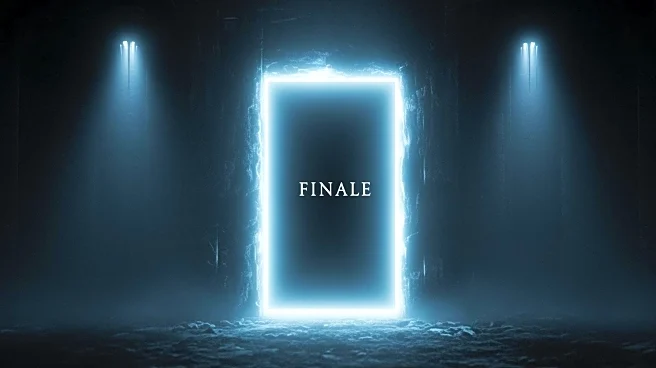What's Happening?
R.L. Stine's children's horror anthology series, 'The Nightmare Room,' is now available for streaming on Tubi. Originally aired on KidsWB! in 2001, the series ran for a single season of 13 episodes. It
features stories centered around childhood fears such as ghosts and monsters, with a format reminiscent of 'The Twilight Zone.' The show is notable for its narration by James Avery and for featuring young actors who later became famous, including Shia LeBeouf, Kaley Cuoco, and Brenda Song. 'The Nightmare Room' is based on a series of books by Stine, similar to his more famous 'Goosebumps' series. The show is one of only two live-action series to have aired on KidsWB!, the other being 'Brats of the Lost Nebula.'
Why It's Important?
The availability of 'The Nightmare Room' on Tubi provides a nostalgic experience for fans of early 2000s children's horror and R.L. Stine's work. It also introduces a new generation to a lesser-known series by the author, potentially expanding his fan base. The show's release on a free streaming platform like Tubi makes it accessible to a wide audience, which could lead to renewed interest in Stine's other works, such as 'Goosebumps' and 'Fear Street.' This move could also inspire studios to consider new adaptations or revivals of 'The Nightmare Room,' tapping into the current trend of rebooting classic series for modern audiences.
What's Next?
With 'The Nightmare Room' now streaming, there may be increased interest in R.L. Stine's other works, potentially leading to new adaptations or revivals. The success of this release could encourage Tubi and other streaming platforms to explore similar content, catering to audiences interested in nostalgic or classic children's horror. Additionally, the show's availability might prompt discussions about the impact of early 2000s children's programming and its influence on today's media landscape.
Beyond the Headlines
The release of 'The Nightmare Room' on Tubi highlights the ongoing trend of reviving classic television series for streaming platforms. This trend reflects a broader cultural interest in nostalgia and the desire to reconnect with past media experiences. It also raises questions about the preservation and accessibility of older television content in the digital age, as streaming services become key players in curating and distributing media from previous decades.











